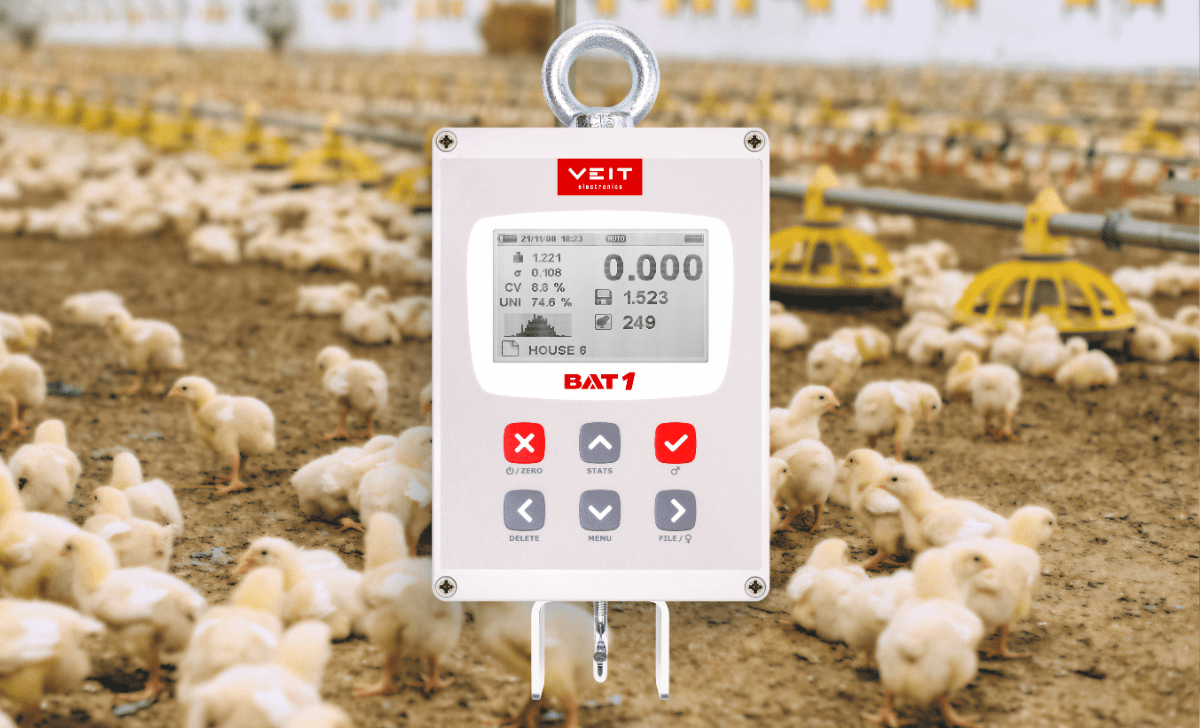Revolutionizing poultry health monitoring starts with understanding a simple truth: weight changes occur before visible symptoms appear. Advanced digital poultry weighing scales can identify health problems weeks earlier than traditional preventive veterinary care methods.
Weight Data Reveals Hidden Health Issues
Research demonstrates that weight fluctuations serve as the most reliable early indicator of poultry health complications (Mels et al., 2023). When birds experience stress, disease, or environmental challenges, their growth patterns shift immediately. These changes appear in weight data long before physical symptoms become visible to farmers or veterinarians.
Studies show that improving gut health in poultry depends heavily on early intervention (Astill et al., 2018). Modern poultry scales like the BAT2 Connect automatic poultry scale continuously monitor bird weights 24/7. This automated system captures subtle weight variations that indicate emerging health concerns, letting farmers address them long before a scheduled veterinary visit.
Early Detection Advantages Over Traditional Care
Broiler health management benefits significantly from continuous weight monitoring versus periodic veterinary inspections. While veterinarians typically visit farms weekly or monthly, automated scales provide real-time health insights. Recent research using deep learning models achieved 92.41% accuracy in detecting health abnormalities through continuous monitoring (Nagipilaitis et al., 2023).
The BAT1 manual poultry scale enables precise weight tracking in multiple barn locations. This portable solution helps farmers identify, for instance, poultry gut health issues across different areas of their facility. Weight uniformity data particularly reveals early signs of disease spread or environmental stress affecting poultry reproductive health.
Technology-Driven Health Management
Advanced poultry health care now integrates artificial intelligence with weight monitoring. Machine learning algorithms analyze weight patterns to predict disease outbreaks 2-3 days earlier than visual inspection methods (Smart Tools for Vets, 2024). This proactive approach transforms preventive veterinary care from reactive to predictive.
The BAT Cloud platform processes weight data using sophisticated analytics. Farmers receive instant alerts when weight patterns indicate potential health problems. This technology enables intervention before clinical symptoms appear, reducing mortality rates and treatment costs.
Scientific Evidence Supporting Weight-Based Detection
Multiple studies confirm that weight monitoring outperforms traditional health assessment methods. Research involving 100 flocks across 28 farms demonstrated that automated weight monitoring systems detect welfare problems significantly earlier than routine veterinary visits (Mels et al., 2023). The study found that digital poultry weighing scales identified health issues invisible to veterinary inspection.
Computer vision and poultry scales integration achieved 98.7% accuracy in disease classification when combined with weight data analysis (Ahmed, M., et al. 2023). This precision exceeds traditional diagnostic methods while providing continuous monitoring capabilities.
Implementation for Better Flock Health
Successful broiler health management requires strategic scale placement and data interpretation. Installing poultry scales in high-traffic areas between feeders and drinkers captures representative weight samples. The BAT2 Connect system automatically transfers this data to farm management systems, enabling immediate response to health threats.
Regular weight monitoring supports improving gut health in poultry through early nutritional interventions. When weight data indicates digestive issues, farmers can adjust feed formulations before severe problems develop. This proactive approach maintains poultry reproductive health and overall flock performance.
Weight-based health monitoring represents the future of poultry health care. By detecting problems weeks before traditional methods, digital poultry weighing scales provide farmers with unprecedented control over flock health outcomes.
Cited Sources:
Mels, C., et al. (2023). Development and evaluation of an animal health and welfare monitoring system for veterinary supervision of pullet farms. Preventive Veterinary Medicine, 217, 105929.
Astill, J., et al. (2018). Detecting and Predicting Emerging Disease in Poultry With the Implementation of New Technologies and Big Data: A Focus on Avian Influenza Virus. Frontiers in Veterinary Science, 5, 263.
Nagipilaitis et al., (2023). Towards Early Poultry Health Prediction through Non-Invasive and Computer Vision-Based Dropping Classification. Animals, 13(19), 3041.
Smart Tools for Vets: Early Poultry Disease Detection with Precision Farming. (2024). CarusLab.
Ahmed, M., et al. (2023). Smartphone Based Detection and Classification of Poultry Diseases from Chicken Fecal Images Using Deep Learning Techniques. ResearchGate.
